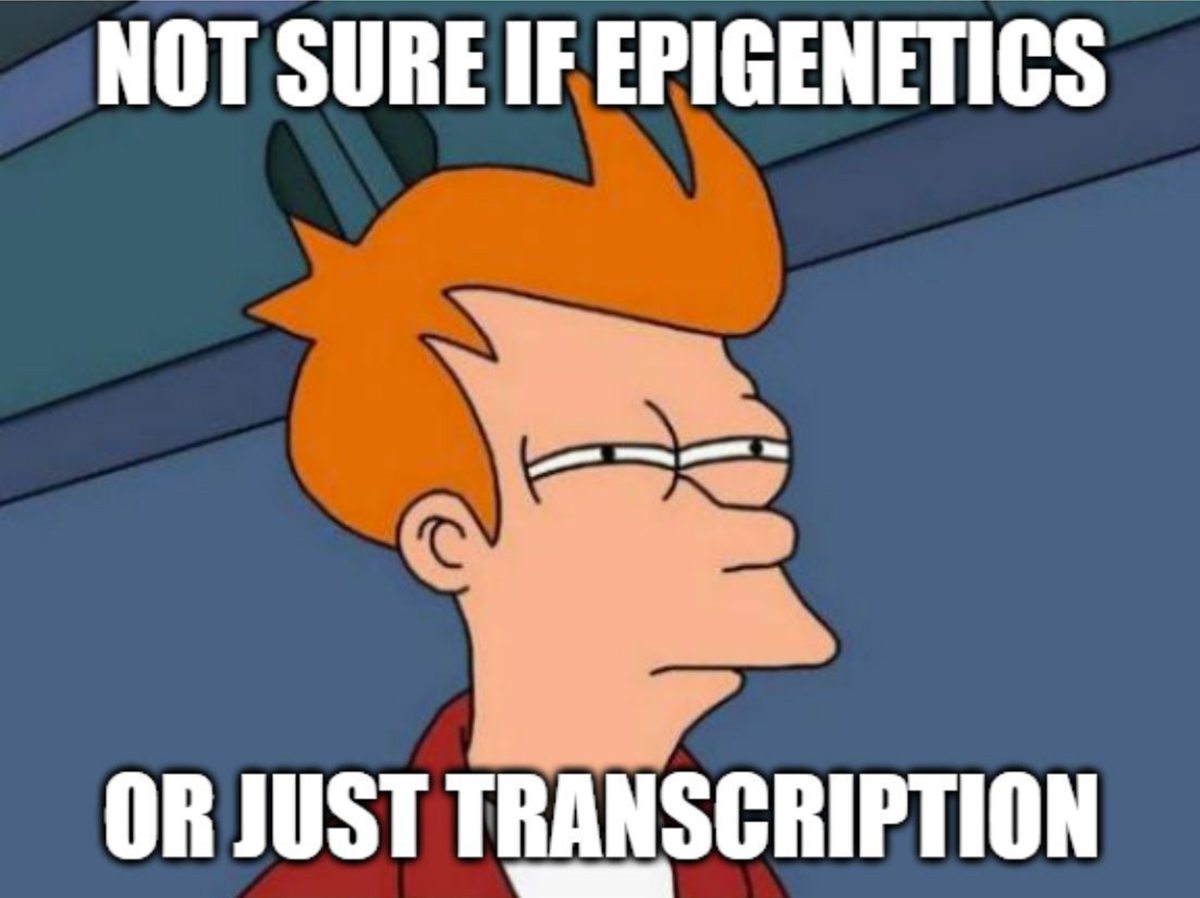Epigenetics and transcription are so intertwined it's hard to tell them apart
A molecular mystery: Is it epigenetics or is it transcription? Yes.

To say that epigenetics is both complex and confusing is an understatement.
There is a long-standing debate over what is considered ‘epigenetic.’
The technical definition of epigenetics is that it’s the study of alterations to DNA that do not involve changing the coding sequence.
These include cytosine methylation and histone modifications.
Histones are the little hockey pucks that coil up DNA into the chromatin that makes up our chromosomes.
And, epigenetic modifications work together to regulate access to DNA by physically closing off and packing it up into heterochromatin or relaxing and opening it to form euchromatin.
These changes ultimately help regulate which genes are expressed.
BUT for these to be considered ‘epigenetic,’ they must be passed onto daughter cells after cell division.
If the changes aren’t preserved, they’re considered ‘transient’ or temporary.
However, whether they’re transient or permanent, they regulate the transcription of DNA into RNA and this controls what proteins are made.
But things get weirder.
Because transcription itself can regulate how histones and DNA are modified.
The act of transcription is often enough to prevent the closing of DNA and keep it active!
And much of the machinery that is involved in maintaining chromatin structure and epigenetic modifications also play a significant role in recruiting all of the factors that result in the production of RNA!
But the opposite is also true.
If a region isn’t actively being transcribed, it’s much more likely to be closed off!
So, what is epigenetics, and what is transcription?
It can get very blurry.
But if we stick to the classic definition, epigenetics is just the stuff that sticks around through cell division.
So how does that actually work?
We’re still trying to figure it out, but it appears to be a combination of factors.
During cell division, a cell splits in half to create two new cells.
To do this, DNA has to be copied or replicated.
And in that process a new DNA strand is made.
As that copying occurs, factors recognize which regions are methylated on the parent strand and methylate the new strand.
The preservation of histone modifications is much more complicated and they can be similarly maintained during replication or they can be re-established later.
1. How much later?
2. And does that mean they’re still epigenetic?
Those are both good questions!
Because another way we know these modifications are preserved is by the continued association and/or eventual recruitment of…
**Drum Roll**
TRANSCRIPTION FACTORS!
This is called 'gene bookmarking' and it helps make sure that cells express the right genes after cell division.
But that brings us back to the original question about what is epigenetic and what is ‘just’ transcription.
The answer is that it’s context dependent.
But also, a lot of the time, the answer is also ‘Yes.’
